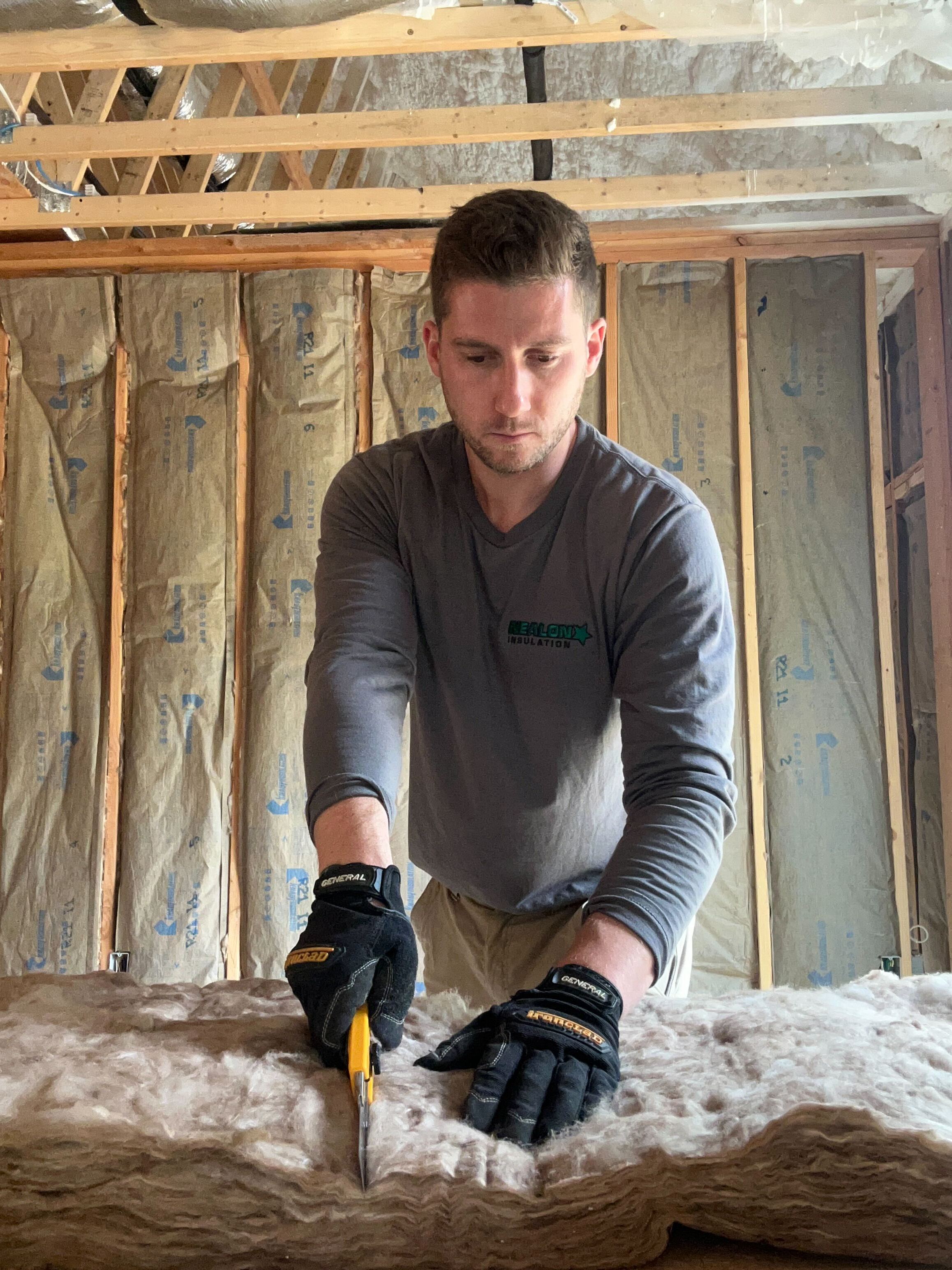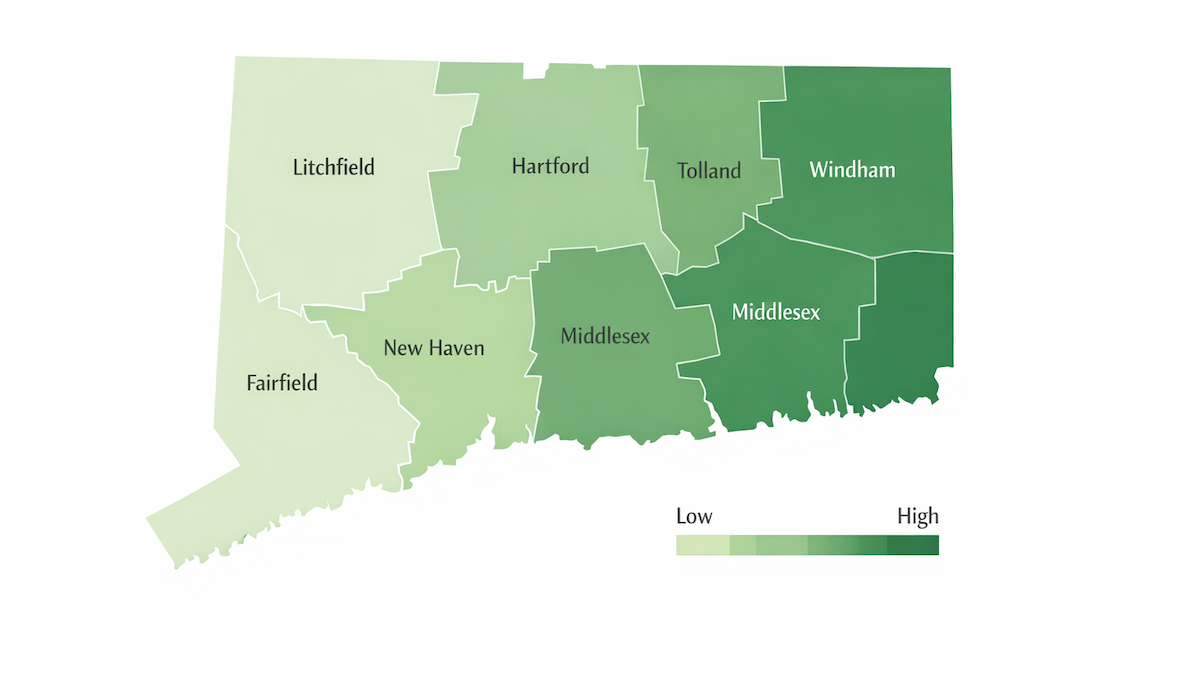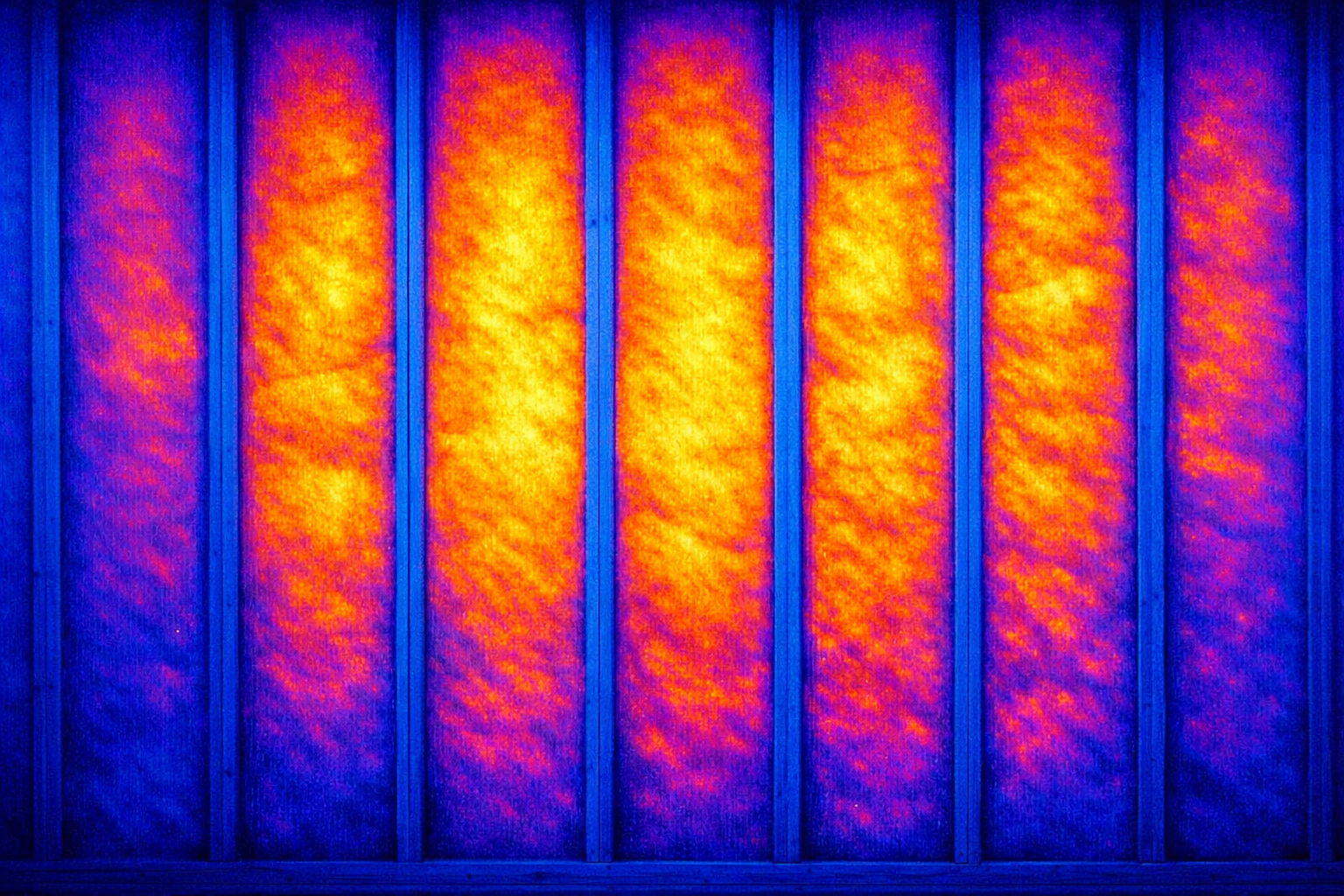Insulation ROI: Insulation Savings Calculator Inside

If you’ve ever looked at your heating bill after a brutal Connecticut winter and thought, “There’s got to be a better way,”—you’re right. And no, it doesn’t involve turning into a blanket burrito for six months a year.
Adding insulation isn’t just about staying warm or keeping the AC from working overtime—it’s one of the smartest financial moves you can make for your home. We’re talking real, trackable return on investment (ROI)—the kind that pays you back every single month in lower utility bills.
And the best part? We’ve made it easy to see how much you could save. This post walks you through actual ROI data for attic, wall, and basement insulation specifically for Connecticut homes—and includes an insulation savings calculator to help you estimate your own potential payoff.
If you're wondering whether the upfront cost is worth it, keep reading. We’ve got the numbers, the breakdown, and a clear path to a warmer (and cheaper) future.
What Is Insulation ROI, and Why Does It Matter?
Let’s talk ROI—return on investment. Sounds like finance-guy jargon, but here’s the plain-English version: you spend money on insulation today, and it pays you back over time in the form of lower energy bills.
Most homeowners don’t think of insulation this way. They think, “I’ll be more comfortable,” or “Maybe the house won’t feel so drafty.” That’s true—but insulation is more than comfort. It’s a long-term money move. Just like solar panels or a high-efficiency furnace, insulation upgrades generate a real return by reducing how much fuel or electricity your home burns to stay comfortable.
So, what kind of ROI are we talking about?
In Connecticut, insulating your attic might cost $2,000 and save you $150 a year. That’s a 7.5% return, every year—better than most savings accounts and a heck of a lot warmer. Insulating empty walls? That can save over $600 annually, with a payback period under 5 years. And after it pays for itself? It keeps paying.
Most energy efficiency upgrades fall somewhere in the 5–15 year payback window, depending on what you're insulating, how leaky your house is now, and what fuel you use. Oil-heated homes usually see faster payback, gas takes a little longer, and electric can swing wildly depending on your rates.
Bottom line: If you’re burning through cash every winter (and summer), you’re already paying for insulation—you’re just not getting it. A solid insulation retrofit flips that around and starts paying you instead.
How Much Can You Save? (Real CT Examples)
Let’s get to the good stuff: dollars and cents. Below are real-world numbers based on Connecticut homes—because what works in Arizona doesn’t mean squat in Guilford in January.
These are average costs and savings for typical retrofit jobs (not new construction), using info from the U.S. Department of Energy, EnergizeCT, and NREL's ResStock study. Your results may vary, but the takeaway is clear: insulation pays.
Attic Insulation
- Typical Cost: $1,500 – $3,000
- Annual Savings: ~$150
- Payback Period: ~8–15 years
Your attic is like a giant heat chimney. If it’s under-insulated (and in Connecticut, it probably is), warm air escapes straight through the roof. Adding blown-in cellulose or fiberglass can cut 10–15% off your heating bills. If you’re burning oil, those savings stack up fast.
Wall Insulation
- Typical Cost: $3,000 – $8,000
- Annual Savings: ~$624
- Payback Period: ~5–8 years
A lot of older homes in CT have empty wall cavities—especially anything built before modern codes. Drill-and-fill cellulose or injection foam can transform your home’s thermal shell. This is one of the highest ROI upgrades you can make. Bonus: it cuts drafts and noise too.
Basement & Crawl Space Insulation
- Typical Cost: $1,000 – $3,000
- Annual Savings: ~$250
- Payback Period: ~6–10 years
Cold basements = cold floors = cranky homeowners. Insulating foundation walls and rim joists stops drafts and keeps your first floor from feeling like a meat locker. Plus, it can help control moisture and cut musty smells.
Quick Comparison Table
If you’re doing all three, your total savings could easily top $1,000 a year. And unlike stock portfolios, insulation never takes a snow day.
Calculator: Estimate Your Insulation Savings
Okay, you’ve seen the averages. Now let’s figure out what insulation could save you.
Whether you're eyeballing your attic or planning to finally seal up that drafty crawl space, this Insulation Savings Calculator helps you estimate your return based on your home's size, current insulation level, and fuel type.
How It Works
You’ll plug in:
- Square footage (attic, walls, basement)
- Current insulation level (none, partial, or up to code)
- Fuel type (oil, gas, electric, etc.)
- Estimated installation cost
The calculator gives you:
- Estimated annual energy savings
- Approximate project cost
- Payback period in years
- Total savings over 10+ years
Think of it as a quick ROI snapshot—like Zillow for your R-value.
Why It Matters
This isn’t just “nice to know.” If your home is under-insulated, you’re already paying for insulation—you’re just giving it to the utility company. The calculator helps you take that back.
What Factors Affect Your Insulation ROI?
Not all insulation projects are created equal—and not all homes pay back the same way. Some folks see savings in just a few years. Others take a bit longer. Here’s what tilts the math in your favor:
1. Current Insulation Levels
If your attic has 3 inches of dusty fiberglass from 1982, your savings potential is massive. The worse your starting point, the faster you win.
2. Fuel Type
- Oil = fastest payback
- Electric = big savings
- Natural gas = solid but slower returns
3. Home Size
More square footage = more surface area leaking heat. Bigger homes have more to gain, even if upfront costs are higher.
4. Air Leakage
Insulation works best when the home is sealed up tight. Air sealing boosts ROI big time.
5. Material Choice
Blown-in cellulose? Cost-effective. Spray foam? Great air seal, but pricier. Foam board? Perfect for basements. Choose based on the job, not just the price tag.
6. Rebates and Incentives
EnergizeCT and other programs offer rebates that can shrink your upfront cost and shorten your payback time.
Why 9 Out of 10 Homes Are Missing Out
Here’s the part that still blows my mind: 9 out of 10 homes in the U.S. are under-insulated. That’s not marketing hype—it’s straight from ENERGY STAR.
And if you own an older home in Connecticut? Odds are you’ve got:
- Thin attic insulation
- Empty wall cavities
- Unsealed rim joists
- Drafts in places you didn’t even know existed
Every year you wait = hundreds in lost energy. And it’s not just about bills. Proper insulation gives you:
- Even room temperatures
- Quieter living spaces
- Fewer drafts and cold floors
- Protection from ice dams and moisture issues
It’s not just a winter project—it’s an all-year improvement.
Final Thoughts: Should You Invest Now?
✅ You’re spending hundreds—maybe thousands—on heat and AC
✅ Most of that escapes through your attic, walls, and basement
✅ Insulation fixes that. And it pays for itself.
✅ The sooner you do it, the sooner you stop lighting money on fire
Still on the fence? Here’s the thing: insulation is one of the few home upgrades that starts paying you back immediately. You’ll feel it in your next bill—and every one after that.
Energy prices aren’t going down. Rebates are available. And comfort? That starts the day it’s installed.
Common FAQ's about Insulation Savings
Will insulation increase my home’s resale value?
Yes. Insulating your attic helps with uneven room temperatures by reducing heat loss in winter and heat gain in summer. It blocks drafts and stabilizes indoor temperatures—especially in upstairs rooms where heat rises. Pairing insulation with air sealing further improves comfort across your entire home.
Is it better to insulate in stages or all at once?
Insulating all at once maximizes energy savings and rebate opportunities, but insulating in stages works well if budget is limited. Start with the attic for the best return, then move to walls and the basement. Bundling upgrades can lower overall costs and accelerate long-term payback.
How do insulation savings compare to installing new windows?
Insulation saves more energy and delivers a quicker return on investment than new windows. While windows help with comfort and appearance, attic and wall insulation typically reduce heat loss more effectively and at a lower cost. Experts often recommend insulating first, then upgrading windows if needed.
Can I get an energy audit to help decide what to insulate?
Yes, you can get an energy audit to help decide what to insulate. EnergizeCT’s Home Energy Solutions program offers subsidized audits with blower door testing, infrared scans, and expert recommendations. It’s the smartest first step to pinpoint where insulation upgrades will make the biggest impact.
Can I insulate and see no savings?
Yes, you can insulate and still see little to no savings—especially if your home is already efficient, the upgrades are minor, or air leaks are left unsealed. Poor installation, low-cost fuel, or targeting the wrong areas can also reduce impact. An energy audit ensures upgrades are worth the cost.
Related Articles
Let's Work Together
Ready to transform your home into an energy-efficient haven? Schedule your free energy assessment today and experience the Nealon difference for yourself.



